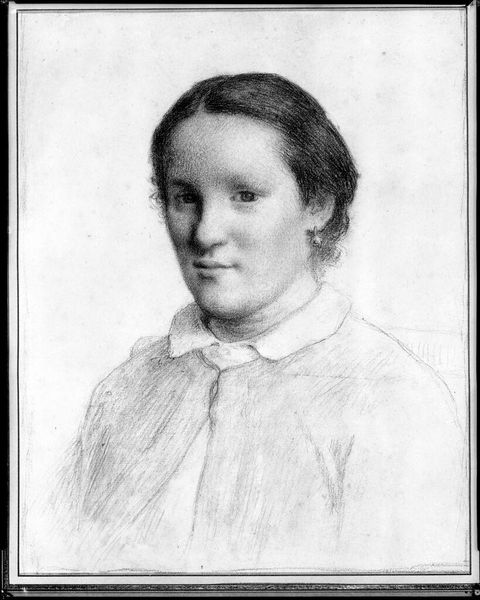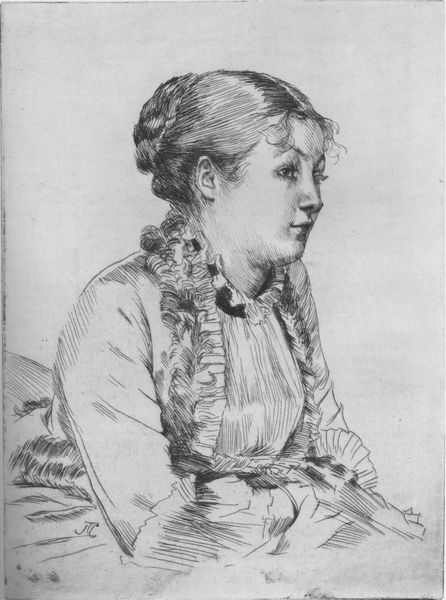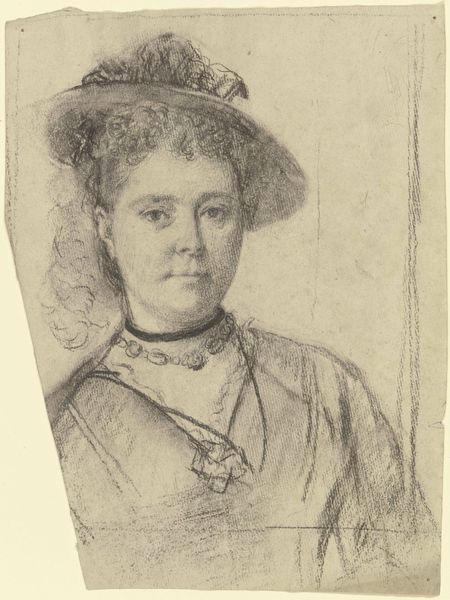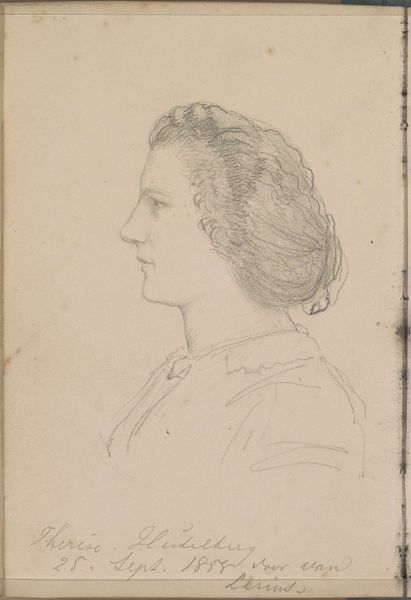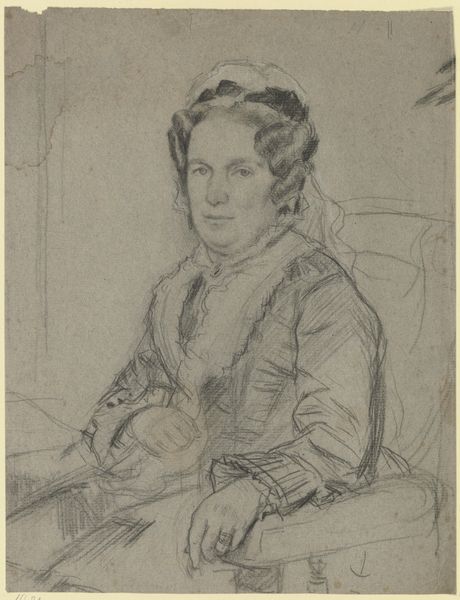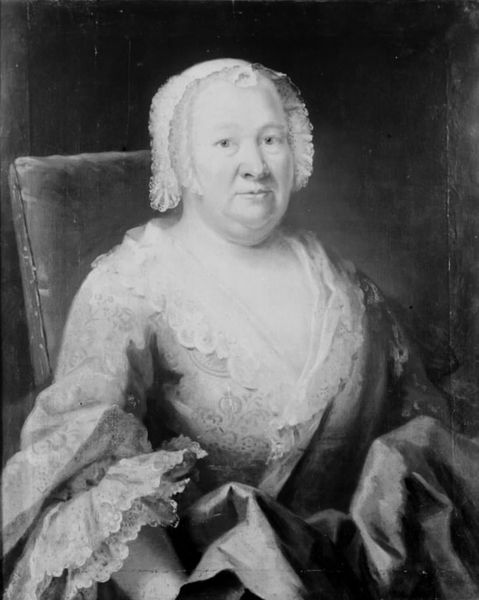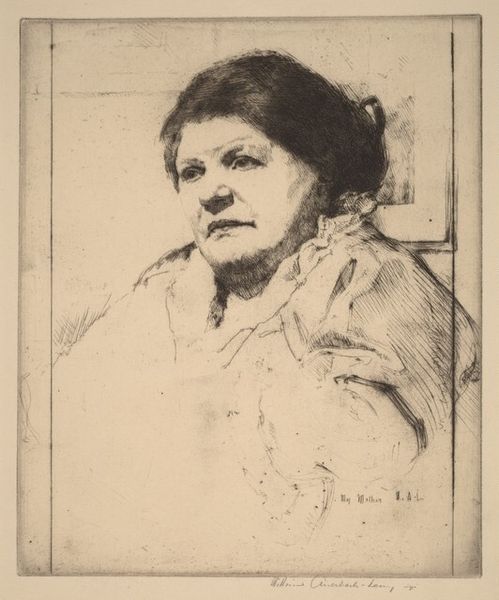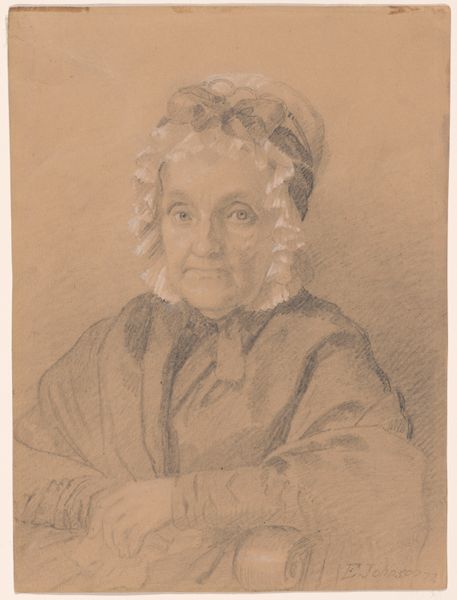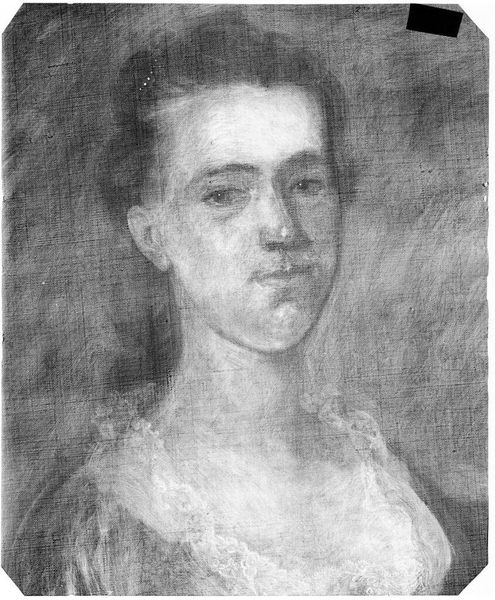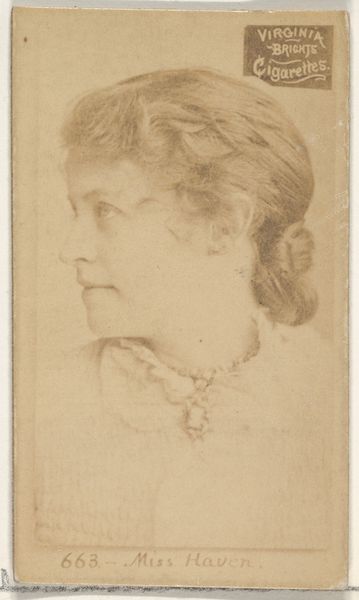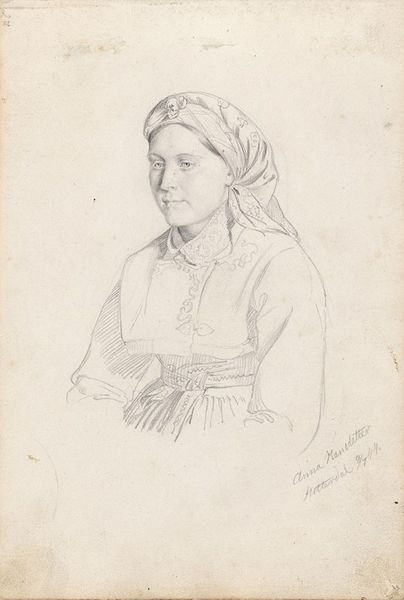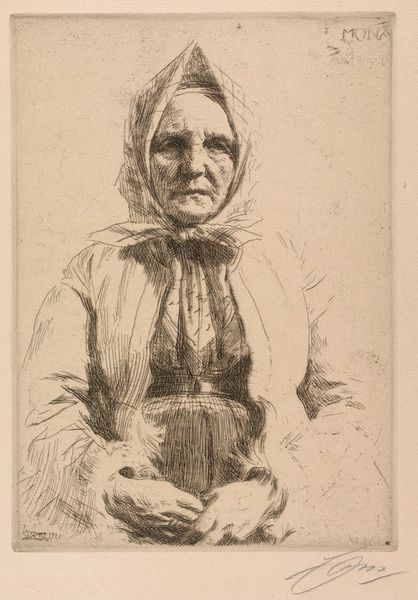
Dimensions: 295 mm (height) x 227 mm (width) (bladmaal)
Jean-Baptiste Carpeaux made this portrait drawing of a woman using graphite, likely in France during the mid-19th century. Carpeaux was a celebrated sculptor known for his expressive realism, however, this portrait is intriguing precisely because it lacks the overt theatricality often associated with his sculptures. The sitter appears as an ordinary woman, portrayed with a sense of quiet dignity. In a period when art academies promoted idealised beauty, this naturalistic depiction invites us to think about the politics of representation. Was Carpeaux, known for breaking with academic conventions, making a statement about whose image deserves artistic attention? Or was this simply a private study, free from the constraints of public expectation? To understand this work more fully, one might delve into the archives of the French art world during the Second Empire. Catalogues of salon exhibitions, biographies of Carpeaux, and social histories of the period could shed light on the cultural significance of such a portrait.
Comments
No comments
Be the first to comment and join the conversation on the ultimate creative platform.

